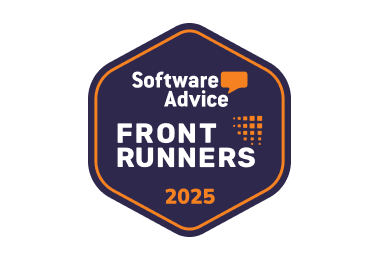Need a SpiceWorks
Cloud Help Desk
alternative?
Discover why LiveAgent is the best SpiceWorks alternative on the market.
- ✓ No setup fee
- ✓ Customer service 24/7
- ✓ No credit card required
- ✓ Cancel any time
Used by

Fed up with your help desk software?
Switch to a dedicated help desk software and improve your customer service desk. LiveAgent offers you an advanced yet simple to use ticketing system that unifies all of your customer communication into one place.
Provide support via email, live chat, phone, customer portal, Viber, WhatsApp or relevant social media and cover every channel your customer use. Read on to find out more about LiveAgent or start your free 30-day trial today.
SpiceWorks Cloud Help Desk vs LiveAgent at a glance
| Feature | LiveAgent | SpiceWorks Cloud Help Desk |
|---|---|---|
| Ticketing | ✅Yes | ✅Yes |
| Live Chat | ✅Yes | ❌No |
| Call Center | ✅Yes | ❌No |
| Self-Service | ✅Yes | ✅Yes |
| Facebook Integration | ✅Yes | ❌No |
| Twitter Integration | ✅Yes | ❌No |
| Instagram Integration | ✅Yes | ❌No |
| Viber Integration | ✅Yes | ❌No |
| WhatsApp Integration | ✅Yes | ❌No |
| Knowledge Base | ✅Yes | ✅Yes |
| Customer Forum | ✅Yes | ✅Yes |
| Automation and Rules | ✅Yes | ✅Yes |
| API Access | ✅Yes | ✅Yes |
| Interactive Voice Response (IVR) | ✅Yes | ❌No |
| Video Calls | ✅Yes | ❌No |
| Unlimited History | ✅Yes | ✅Yes |
| Unlimited Websites | ✅Yes | ✅Yes |
| Unlimited Chat Buttons | ✅Yes | ❌No |
| Unlimited Tickets/Emails | ✅Yes | ✅Yes |
| Unlimited Call Recording | ✅Yes | ❌No |
| Unlimited 24/7 Support | ✅Yes | ❌No |
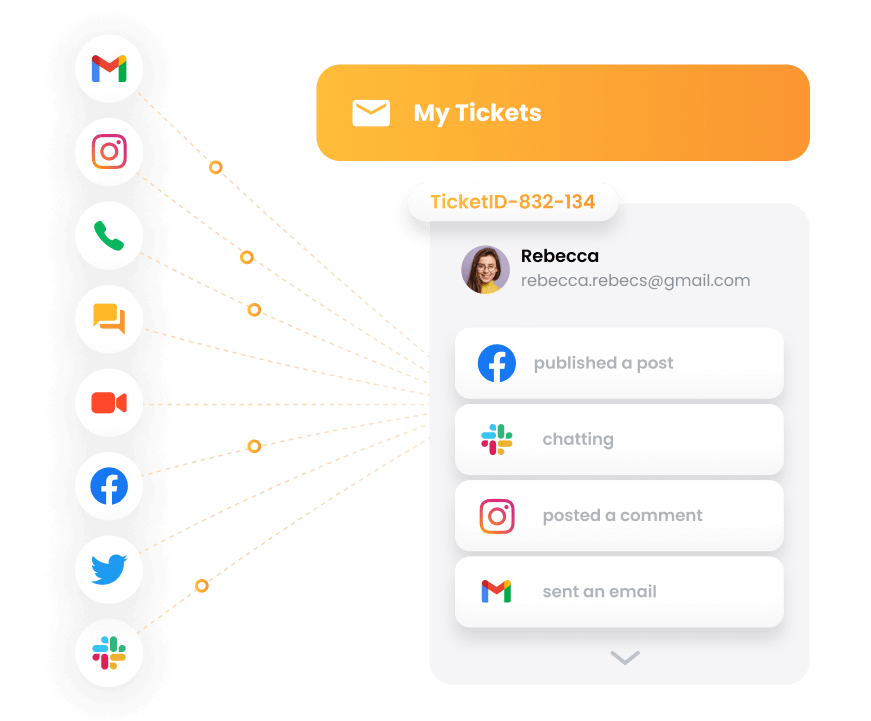
Leading SpiceWorks Cloud Help Desk alternative
Take your customer service further with the right software. LiveAgent is a help desk solution that allows you to take your communication even further with all relevant channels. Organize emails, live chat, Facebook, Instagram, Twitter, Viber, phone calls, customer portal inquiries – in the universal inbox.
Everything is managed via a reliable ticket system, so there is no need to worry about messy communication. Everything is sorted automatically, as it should be.
Swiftest chat widget
Live chat is one of the best and most useful tools an agent can utilize to communicate with their customers. It’s all about instant communication, so it needs to be fast.
LiveAgent has the fastest live chat on the market, with chat displayed speeds at 2.5 seconds. Furthermore, you can see what the customers are typing before they hit send. Now you can truly provide a fast support and stay on top of any situation.

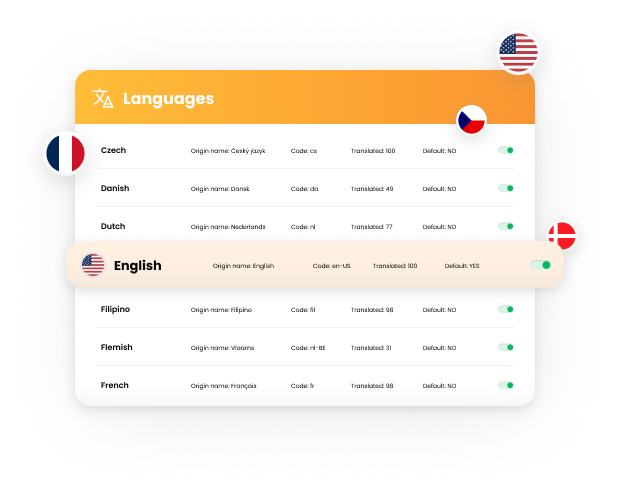
Breaking down language barriers
Our customer service software is multilingual. LiveAgent is available in 43 different language translations (some partial) and supports language adaptable widgets. Don’t let foreign languages create a barrier between you and your customers. We’ve got you covered.
3 reasons why companies switch to LiveAgent
Improved satisfaction
LiveAgent increases customer satisfaction & improves conversion rates.
Increased productivity
Decrease the work time of your agents and solve more customer queries thanks to our universal inbox.
Rich on features
Over 175 + features to make your work flow easier and more enjoyable.
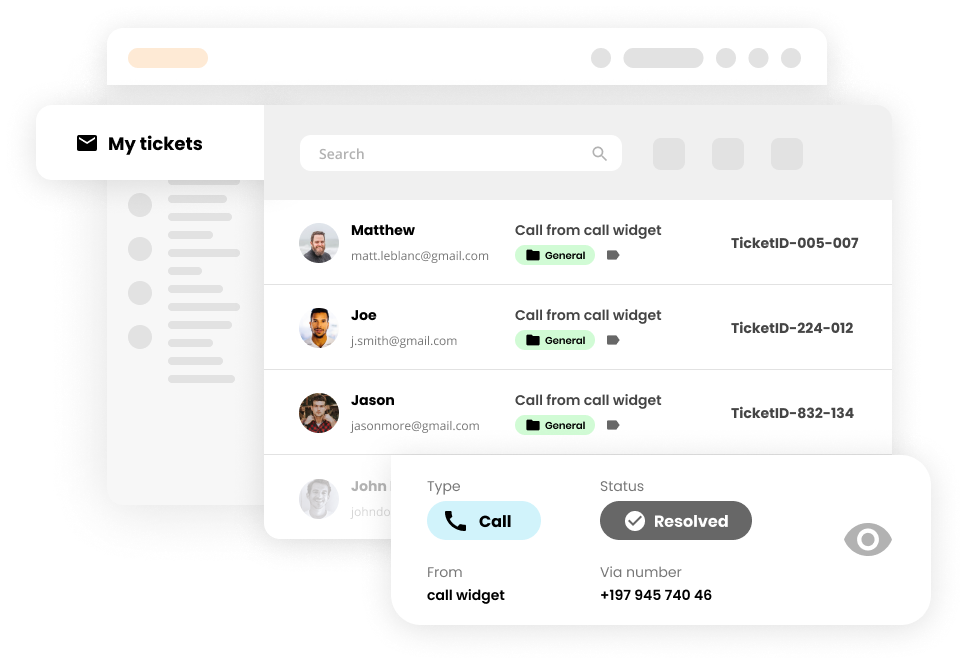
Intuitive and affordable
Great CRM customer service software doesn’t have to come with an expensive price tag. Get the tools you need for a fair price instead.
LiveAgent has three reasonably priced plans that are packed with tools, features and integrations to make your workflow smooth and easy. All you need to do is pick the one that suits your business the most. See our paid plans and learn more.
Ready to try it out?
LiveAgent is the most reviewed and #1 rated help desk software for small and medium-sized businesses in 2025. Stay closer to your customers and help them instantly with LiveAgent.
Use the potential of 175+ available help desk features, including a powerful ticketing system with automation, live chat, social networks, call centre and customer portal.
LiveAgent vs. SpiceWorks Cloud Help Desk comparison
Check out how we compare to SpiceWorks Cloud Help Desk based on customer reviews on Capterra
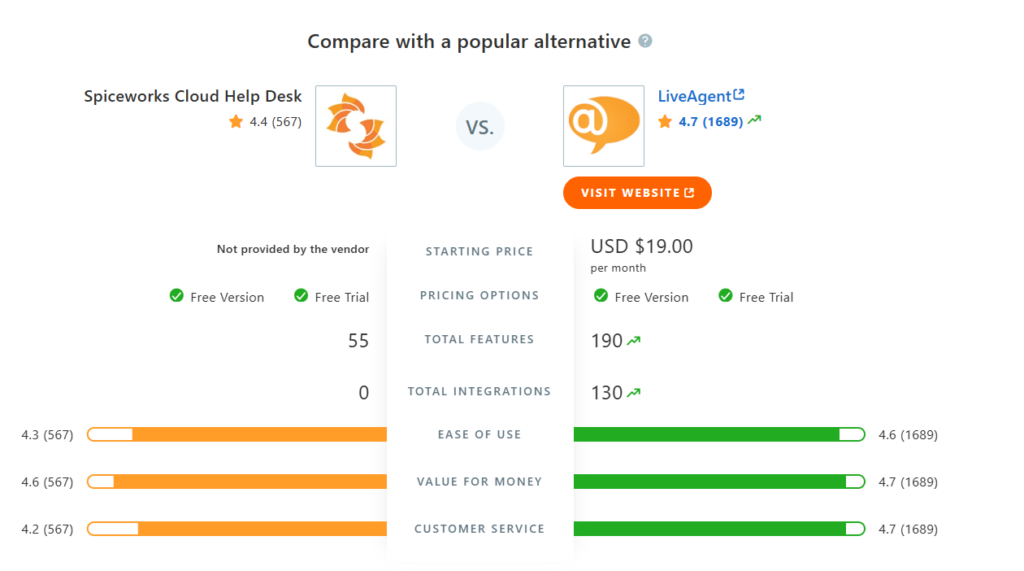
Current as of 03/21/2025
See how LiveAgent has boosted the productivity of our clients:
-
![Roman Bosch]() It’s a pleasure to have a great portal that improves our customer service.Roman Bosch , Partly
It’s a pleasure to have a great portal that improves our customer service.Roman Bosch , Partly![Partly]()
-
![Christine Preusler]() LiveAgent empowers our agents to provide better, faster, and more accurate support.Christine Preusler , HostingAdvice
LiveAgent empowers our agents to provide better, faster, and more accurate support.Christine Preusler , HostingAdvice![HostingAdvice]()
-
![Karl Dieterich]() LiveAgent helped us to achieve 2 important goals: increase customer satisfaction and sales.Karl Dieterich , Covomo
LiveAgent helped us to achieve 2 important goals: increase customer satisfaction and sales.Karl Dieterich , Covomo![Covomo]()
-
![Hendrik Henze]() We have been using LiveAgent since August and we are really satisfied with it.Hendrik Henze , HEWO Internetmarketing
We have been using LiveAgent since August and we are really satisfied with it.Hendrik Henze , HEWO Internetmarketing![HEWO Internetmarketing]()
-
![Razvan Sava]() Since we are using LiveAgent our response time improved by 60%.Razvan Sava , Webmaster Deals
Since we are using LiveAgent our response time improved by 60%.Razvan Sava , Webmaster Deals![Webmaster Deals]()
-
![Taras Baca]() Our paid customer conversion rate went up 325% the first month we've set up and actively started using LiveAgent.Taras Baca , XperienceHR
Our paid customer conversion rate went up 325% the first month we've set up and actively started using LiveAgent.Taras Baca , XperienceHR![XperienceHR]()
-
![Andrej Ftomin]() I have to say, I have never experienced such a professional customer approach.Andrej Ftomin , TAZAR Group
I have to say, I have never experienced such a professional customer approach.Andrej Ftomin , TAZAR Group![TAZAR Group]()
-
![Matt Janaway]() We find LiveAgent to be the best live chat solution by far.Matt Janaway , The Workplace Depot
We find LiveAgent to be the best live chat solution by far.Matt Janaway , The Workplace Depot![The Workplace Depot]()
-
![Viviane Carter]() We use LiveAgent on all of our ecommerce websites. The tool is easy to use and improves our productivity.Viviane Carter , CSI Products
We use LiveAgent on all of our ecommerce websites. The tool is easy to use and improves our productivity.Viviane Carter , CSI Products![CSI Products]()
-
![Christian Lange]() With LiveAgent we’re able to give our customers support wherever they are.Christian Lange , Lucky-Bike
With LiveAgent we’re able to give our customers support wherever they are.Christian Lange , Lucky-Bike![Lucky-Bike]()
-
![Jens Malmqvist]() I can recommend LiveAgent to anyone interested in making their customer service better and more effective.Jens Malmqvist , Projure
I can recommend LiveAgent to anyone interested in making their customer service better and more effective.Jens Malmqvist , Projure![Projure]()
-
![Catana Alexandru]() I'm sure we would spend 90% of our day sorting through emails if we didn't have LiveAgent.Catana Alexandru , Websignal
I'm sure we would spend 90% of our day sorting through emails if we didn't have LiveAgent.Catana Alexandru , Websignal![Websignal]()
-
![Jan Wienk]() With LiveAgent we are able to keep our players happy by offering more efficient support resulting in higher return rates.Jan Wienk , All British Casino
With LiveAgent we are able to keep our players happy by offering more efficient support resulting in higher return rates.Jan Wienk , All British Casino -
![Allan Bjerkan]() LiveAgent is reliable, reasonably priced, and simply a great choice for any fast-paced online business!Allan Bjerkan , Norske Automaten
LiveAgent is reliable, reasonably priced, and simply a great choice for any fast-paced online business!Allan Bjerkan , Norske Automaten![Norske Automaten]()
-
![Sissy Böttcher]() We like it because it is easy to use and offers great functionality, such as useful reporting features.Sissy Böttcher , Study Portals
We like it because it is easy to use and offers great functionality, such as useful reporting features.Sissy Böttcher , Study Portals![Study Portals]()
-
![Peter Koning]() We love LiveAgent - it makes supporting our customers easy.Peter Koning , TypoAssassin
We love LiveAgent - it makes supporting our customers easy.Peter Koning , TypoAssassin![TypoAssassin]()
-
![Aranzazu F]() We like to offer our customers the best support experience. That’s why we chose LiveAgent.Aranzazu F , Factorchic
We like to offer our customers the best support experience. That’s why we chose LiveAgent.Aranzazu F , Factorchic![Factorchic]()
-
![Rick Nuske]() From setup to ongoing support and everything else in between, the team at LiveAgent continues to impress.Rick Nuske , MyFutureBusiness
From setup to ongoing support and everything else in between, the team at LiveAgent continues to impress.Rick Nuske , MyFutureBusiness![MyFutureBusiness]()
-
![Vojtech Kelecsenyi]() LiveAgent saves us hundreds of precious minutes every day by making customer service clear and in order.Vojtech Kelecsenyi , 123-Nakup
LiveAgent saves us hundreds of precious minutes every day by making customer service clear and in order.Vojtech Kelecsenyi , 123-Nakup![123-Nakup]()
-
![Rafael Kobalyan]() Unlimited agents, email, social media, and phone integration. All that for less than we were paying with our previous provider.Rafael Kobalyan , Betconstruct
Unlimited agents, email, social media, and phone integration. All that for less than we were paying with our previous provider.Rafael Kobalyan , Betconstruct![Betconstruct]()
-
![Martin Drugaj]() We’ve been using LiveAgent since 2013. We can't imagine working without it.Martin Drugaj , Atomer
We’ve been using LiveAgent since 2013. We can't imagine working without it.Martin Drugaj , Atomer![Atomer]()
-
![Ivan Golubović]() It's a cost-effective solution that can help you with a large amount of support requests via different channels.Ivan Golubović , AVMarket
It's a cost-effective solution that can help you with a large amount of support requests via different channels.Ivan Golubović , AVMarket![AVMarket]()
-
![Rustem Gimaev]() Answering emails from Outlook was so hard to manage. With LiveAgent we're sure every email is answered in time.Rustem Gimaev , Antalya Consulting Language Center
Answering emails from Outlook was so hard to manage. With LiveAgent we're sure every email is answered in time.Rustem Gimaev , Antalya Consulting Language Center![Antalya Consulting Language Center]()
-
![Randy Bryan]() LiveAgent is so awesome. With very little time and effort I had it up and running smoothly in a few...Randy Bryan , tekRESCUE
LiveAgent is so awesome. With very little time and effort I had it up and running smoothly in a few...Randy Bryan , tekRESCUE![tekRESCUE]()
-
![Timothy G. Keys]() I highly recommend the LiveAgent product, not only as a Kayako alternative but a much better solution with added value.Timothy G. Keys , Marietta Corporation
I highly recommend the LiveAgent product, not only as a Kayako alternative but a much better solution with added value.Timothy G. Keys , Marietta Corporation![Marietta Corporation]()
-
![Mihaela Teodorescu]() The support team always responded promptly with quick to implement solutions.Mihaela Teodorescu , eFortuna
The support team always responded promptly with quick to implement solutions.Mihaela Teodorescu , eFortuna![eFortuna]()
-
![Hilda Andrejkovičová]() It helps us categorize the nature of the tickets and statistically track what our clients need most.Hilda Andrejkovičová , TrustPay
It helps us categorize the nature of the tickets and statistically track what our clients need most.Hilda Andrejkovičová , TrustPay![TrustPay]()
-
![Alexandra Danišová]() We see LiveAgent as a great tool for communicating with customers.Alexandra Danišová , Nay
We see LiveAgent as a great tool for communicating with customers.Alexandra Danišová , Nay![Nay]()
-
![Samuel Smahel]() LiveAgent sped up our communication with our customers and gave us an option to chat with them as well.Samuel Smahel , m:zone
LiveAgent sped up our communication with our customers and gave us an option to chat with them as well.Samuel Smahel , m:zone -
![David Chandler]() Simply put - LiveAgent beats everything out there at this, or even higher, price-points.David Chandler , Volterman
Simply put - LiveAgent beats everything out there at this, or even higher, price-points.David Chandler , Volterman![Volterman]()
See why our Customers Chose LiveAgent over SpiceWorks Cloud Help Desk
| Platform | Capterra Rating | Number of Reviews | Integrations | Free Version | Free Trial | Price Range |
|---|---|---|---|---|---|---|
| LiveAgent | 4.7/5 | 1,500+ | 220+ | ✅Yes | ✅Yes | $15/agent/m |
| LiveChat | 4.7/5 | 1,400+ | 200+ | ❌No | ✅Yes | $20/agent/m |
| Pure Chat | 4.5/5 | 400+ | 1,000+ | ❌No | ✅Yes | $39/agent/m |
| Userlike | 4.6/5 | 200+ | 30+ | ✅Yes | ✅Yes | €90/agent/m |
| SpiceWorks Cloud Help Desk | 4.4/5 | 500+ | 0 | ✅Yes | ✅Yes | custom |
Feel free to check out what other customers are saying about LiveAgent. LiveAgent has collected more than 2800 reviews on various software marketplaces like Capterra, Trustpilot, GetApp, G2, Software Advice.
Compare us with others
Discover how LiveAgent's extensive integrations, plugins, and apps can enhance your help desk software and boost customer satisfaction. Explore popular integrations with VoIP partners like Hero, Orion, and Redspot, plus CRM, eCommerce, and more. Visit us to streamline your communication and elevate your business with easy integration guides.
The right help desk for every business
LiveAgent is a help desk software that adapts to the needs of different business models. Explore how LiveAgent fits your niche. Agency Edu and NGOs rely on LiveAgent.
All-in-one knowledge base software
Create stunning knowledge bases & FAQs with LiveAgent! Empower customers with instant answers. Free 30-day trial, no credit card required.
You will be
in Good Hands!
Join our community of happy clients and provide excellent customer support with LiveAgent.

Our website uses cookies. By continuing we assume your permission to deploy cookies as detailed in our privacy and cookies policy.

- How to achieve your business goals with LiveAgent
- Tour of the LiveAgent so you can get an idea of how it works
- Answers to any questions you may have about LiveAgent

 Български
Български  Čeština
Čeština  Dansk
Dansk  Deutsch
Deutsch  Eesti
Eesti  Español
Español  Français
Français  Ελληνικα
Ελληνικα  Hrvatski
Hrvatski  Italiano
Italiano  Latviešu
Latviešu  Lietuviškai
Lietuviškai  Magyar
Magyar  Nederlands
Nederlands  Norsk bokmål
Norsk bokmål  Polski
Polski  Română
Română  Русский
Русский  Slovenčina
Slovenčina  Slovenščina
Slovenščina  简体中文
简体中文  Tagalog
Tagalog  Tiếng Việt
Tiếng Việt  العربية
العربية  Português
Português 
